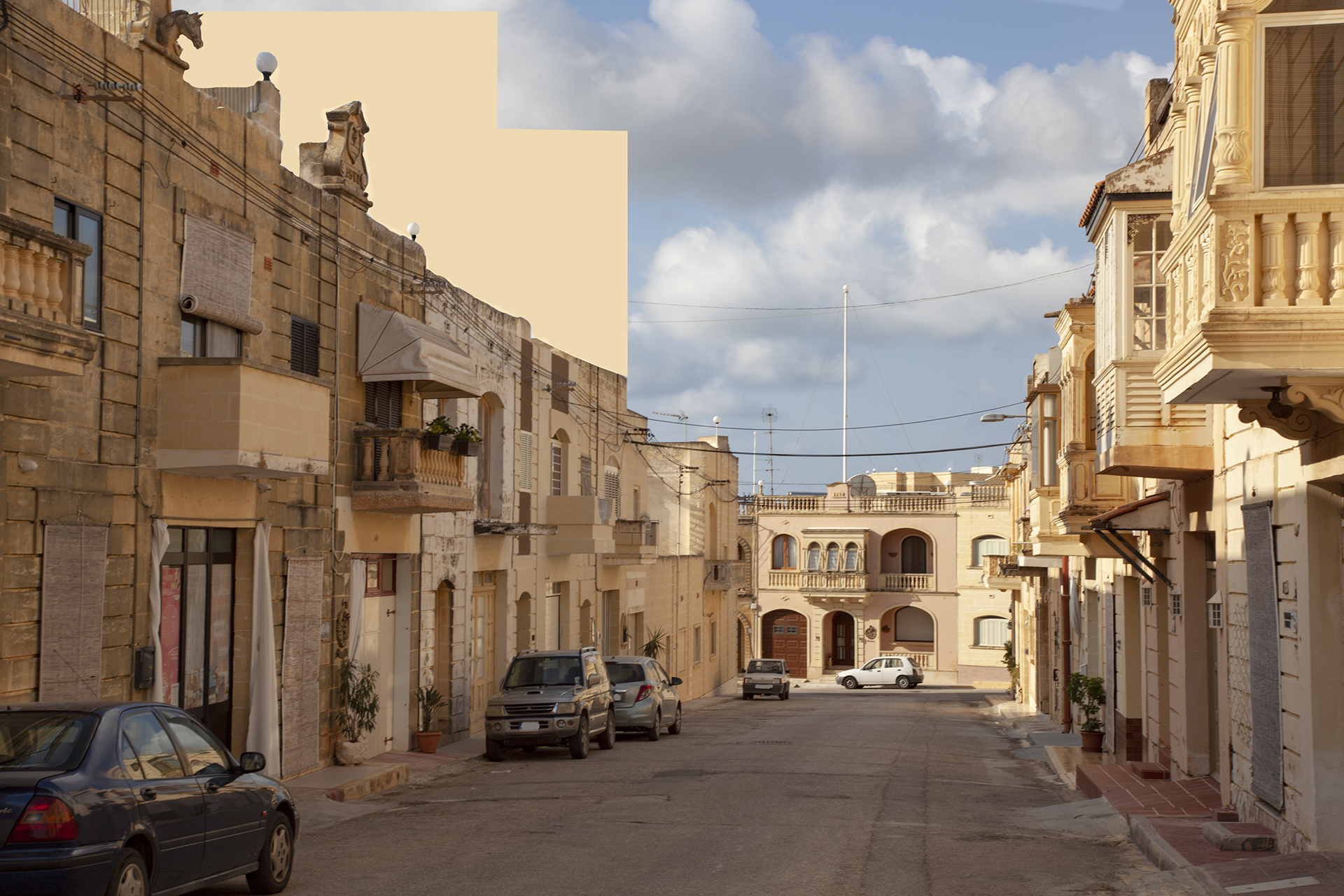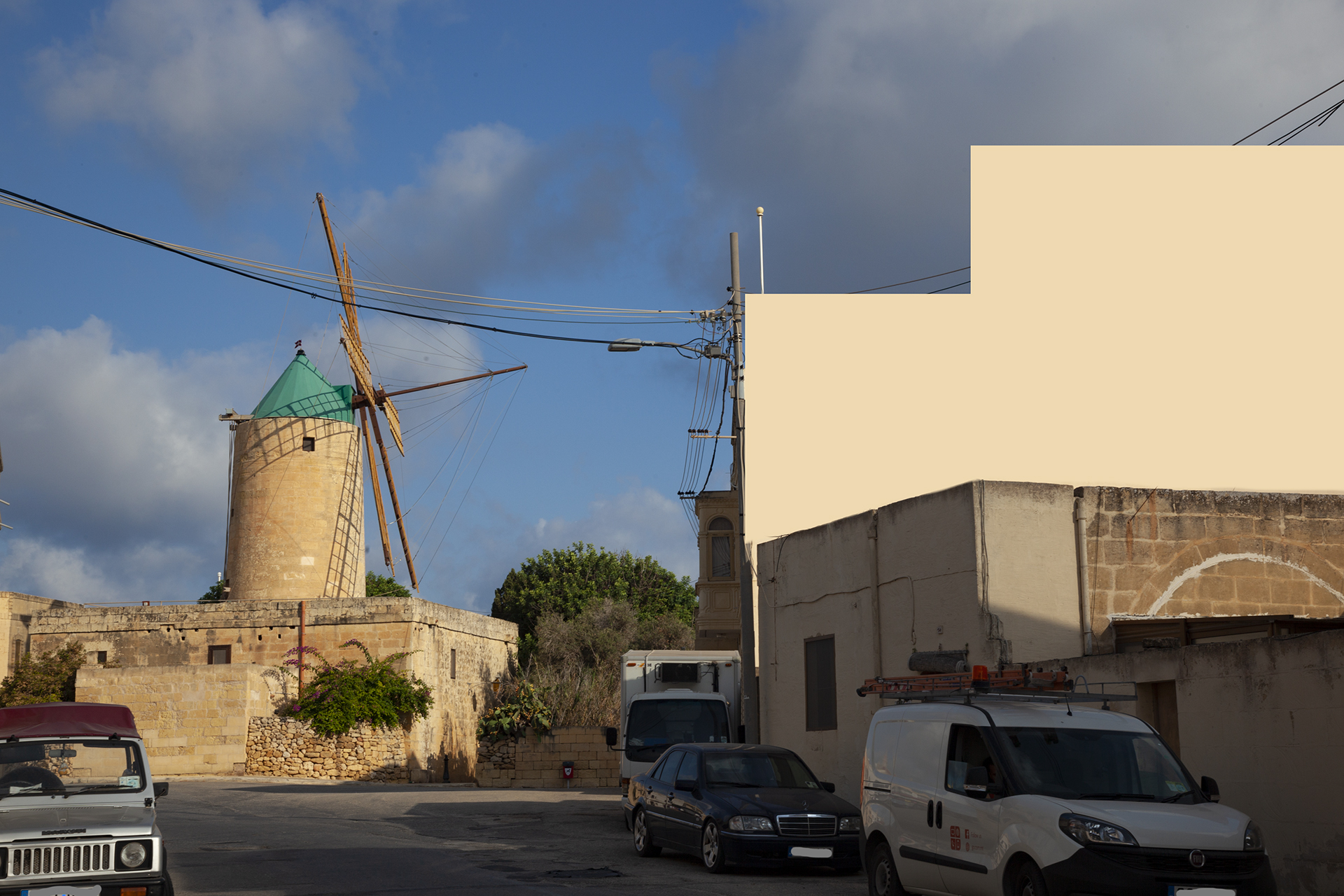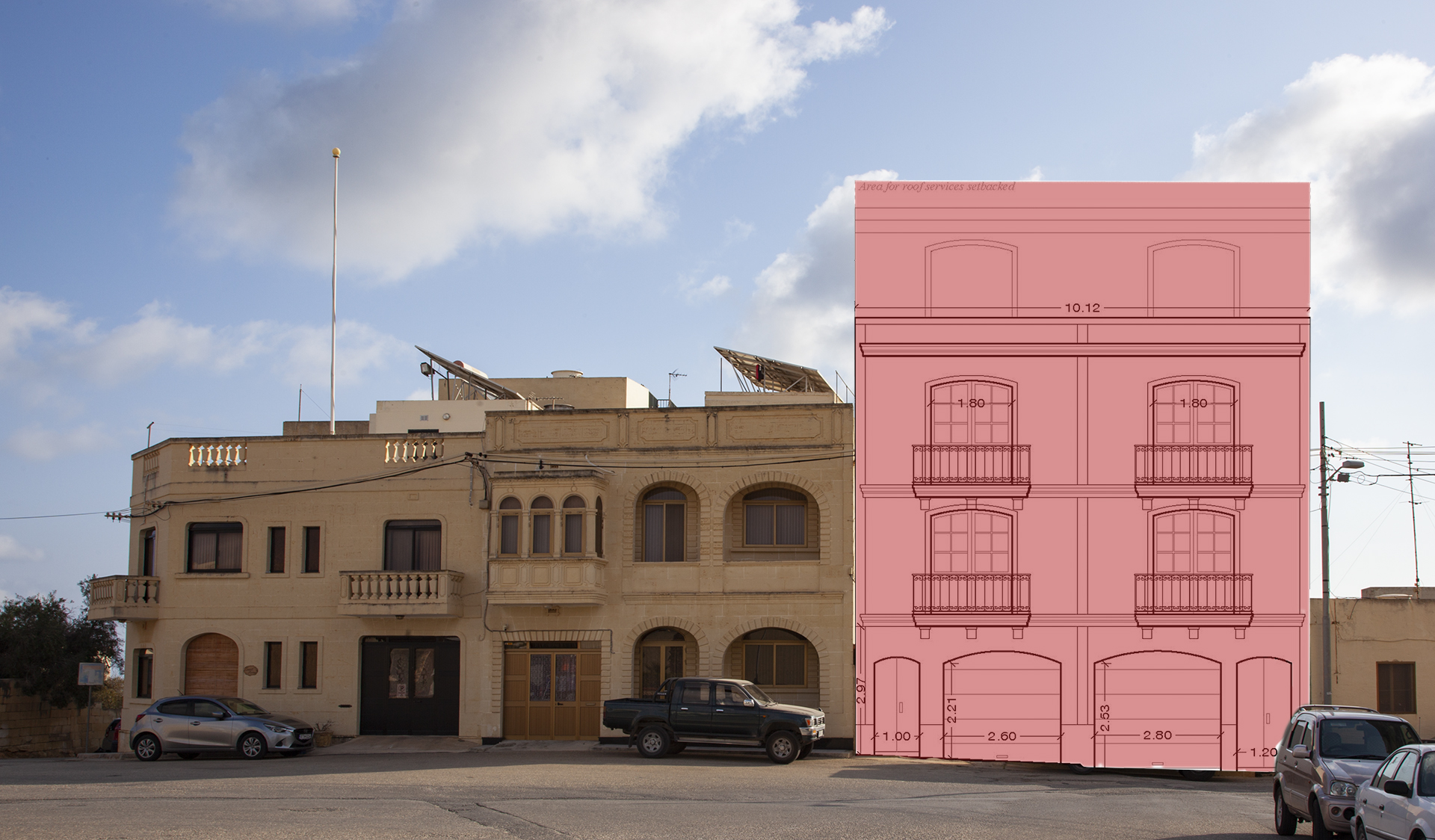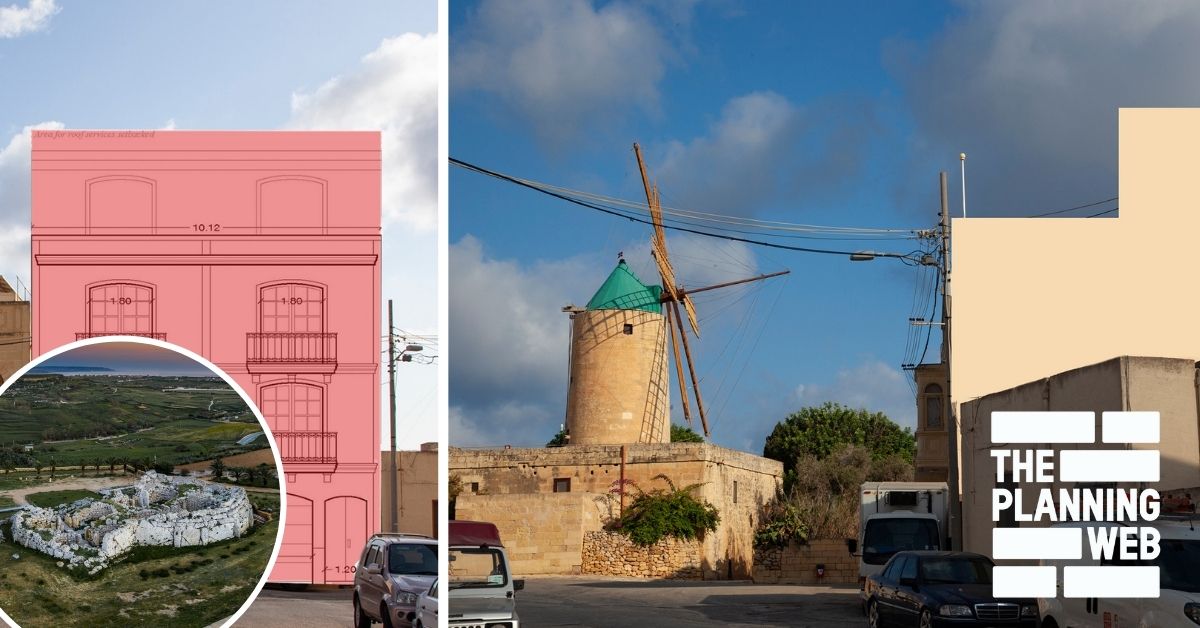A cluster of development applications for blocks of flats in a sensitive area in which the Neolithic Ġgantija Temples and Ta’ Kola Windmill are located have encountered stiff opposition from NGOs and the Superintendence of Cultural Heritage, and led to renewed calls by local politicians to change planning policies in Gozo.
The area, which features two-storey townhouses built in the 1970s, lies in-between the Neolithic complexes of Ġgantija Temples and Xaghra Stone Circle on one side and Malta’s most attractive windmill, Ta Kola, on the other side. The town square is round the corner.
Two of the applications are for five-storey blocks of flats while the third sought to add two floors on top of the existing house in an incremental fashion. These developments, if successful, would break the existing rhythmic streetscape of two-storey townhouses, and instead create a serrated streetscape dominated by their blank walls on the side of the buildings.
The Environment and Resources Authority made this point in its submission to one of the applications, writing that “the height of the building, having a total of five floors, is considered excessive vis-a-vis the landscape context and the visual amenity of scheduled sites Il-Mitħna ta’ Kola, Ġgantija temples and Xagħra area. The height of the building should respect the height of the existing streetscape.”
In comments to Lovin Malta, PN MP Kevin Cutajar called on “competent authorities to pay due attention to the historical sensitivity of this zone and see to it that development does not have a negative impact that mars the context or views of historical heritage in the area.”
“As a son of Xaghra and MP from this village,” he added, “although I understand that development has to occur, I appeal to the government to afford protection to the treasures bequeathed to us by our forefathers.”

Hundreds of objections have reached the Planning Authority. Among them is an objection from the Xaghra Local Council.
The mayor, Christian Zammit, said when contacted: “A complete overhaul of planning policies is needed now. We cannot afford to wait longer as otherwise we are going to end up with pigeon-hole flats everywhere. Both [political] parties have to sit around a table and agree on planning policy reform in Gozo.”
Zammit also talked of complaints by residents at widespread road closures due to construction activity.
“We have construction on almost every street,” he said. “We are also starting to have problems with parking and increased water runoff when it rains because of development that has reduced the number of fields that used to absorb rainwater.”
Statistics published by The Planning Web, a major new tool of Lovin Malta, show that Xaghra is a hotspot for development in Gozo, with the average number of permits granted for development amounting to two a week between 2017 and 2020.
Of the three applications in the neighbourhood of Ggantija Temples, the Superintendence of Cultural Heritage has objected to all of them due to their impact on the context of the heritage sites.

One of the three has already been subject to two planning applications, with the Planning Authority refusing the second application three weeks ago. In that case, the applicant first applied for internal changes to the townhouse and a receded second floor, which was approved, and then he applied to shift the second floor to street alignment and add a “washroom” on top. This was refused, with the end result being that the authority has permitted a receded floor on top of the existent two floors.
The other two outstanding applications are more impactful on the streetscape and the context of the area. One of them is situated closer to the windmill, within a fifty-metre radius designed as Scheduled Building Setting. That application is seeking a replace a largely empty plot with a block of four storeys from ground level, plus underground garages.
The third application is for a block of flats of five floors from ground level, and it would necessitate demolishing a townhouse built only fifty years ago. Although this is the furthest from any single heritage site, it lies in the middle of the zone of the two-storey townhouses and the three heritage sites. The NGO Din L-Art Helwa said in its submission that the five-storey block would “deform what is presently a uniform and intact urban scheme.”
The local council said “it would set a dangerous precedent” that would lead to a doubling of “the current height which would have a negative impact on the setting of the Temples and other archaeological sites in the vicinity, apart from the negative impact on the townscape of Xaghra in general.”
The Superintendence of Cultural Heritage has asked for photomontages and “point of view images” taken from heritage sites to consider the matter further.

What do you think of the development happening in Gozo?


Recent Comments